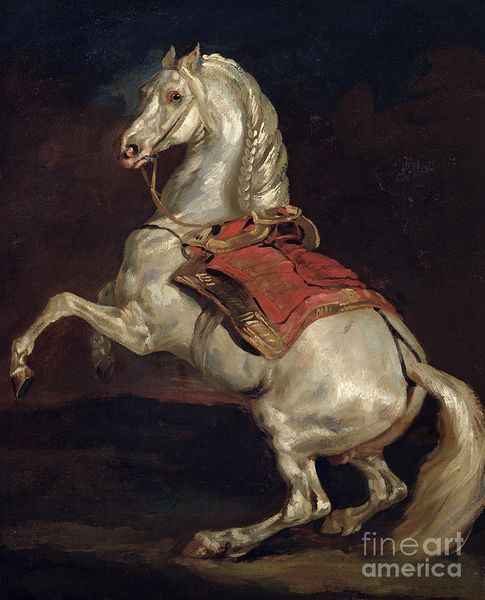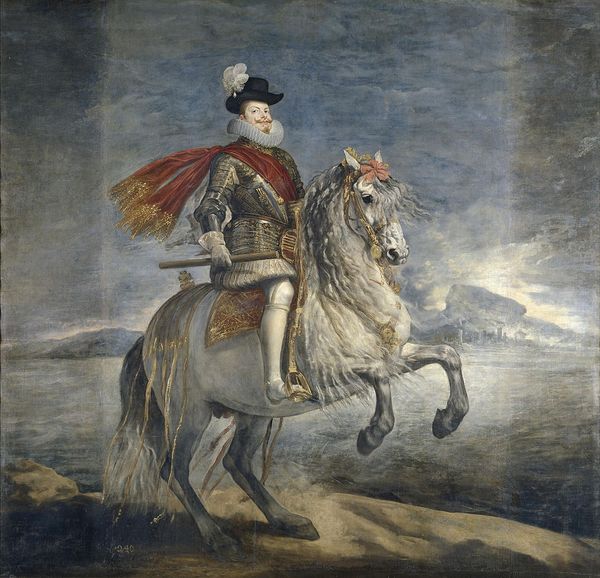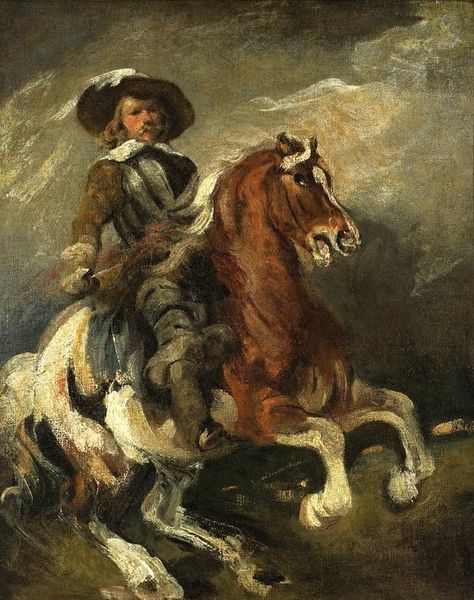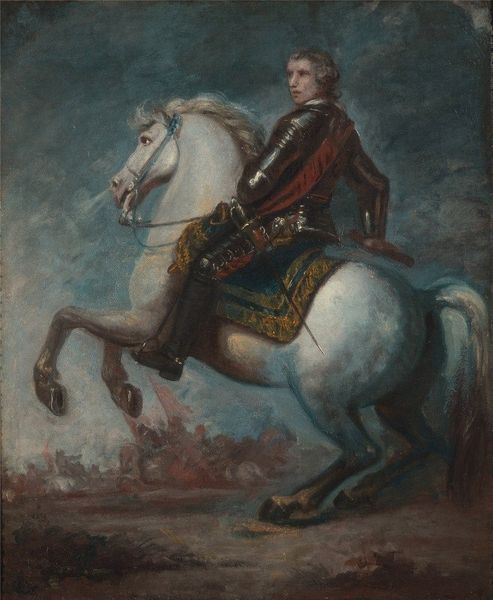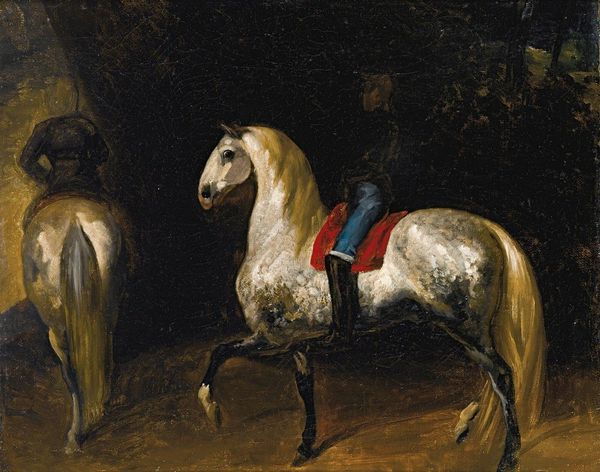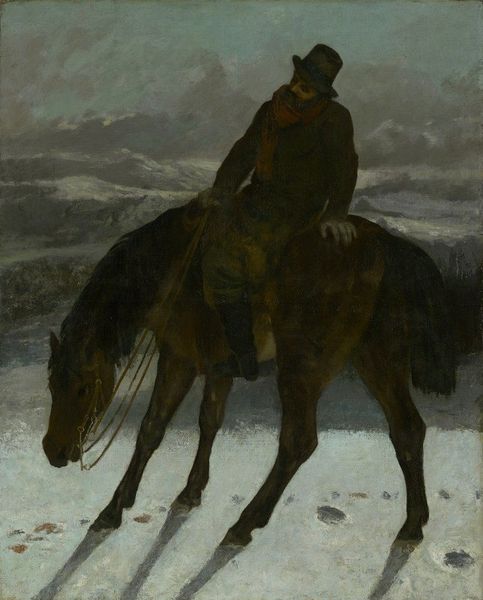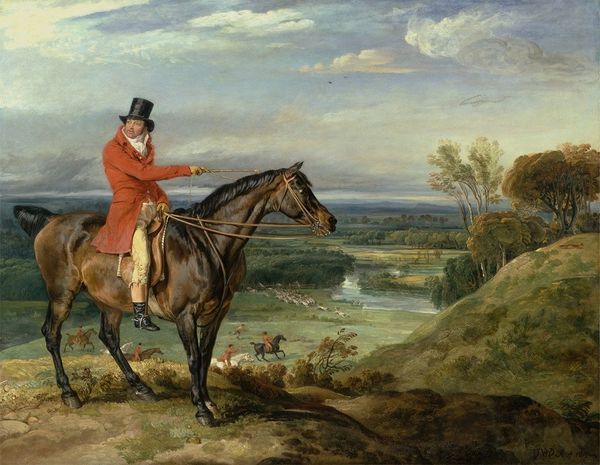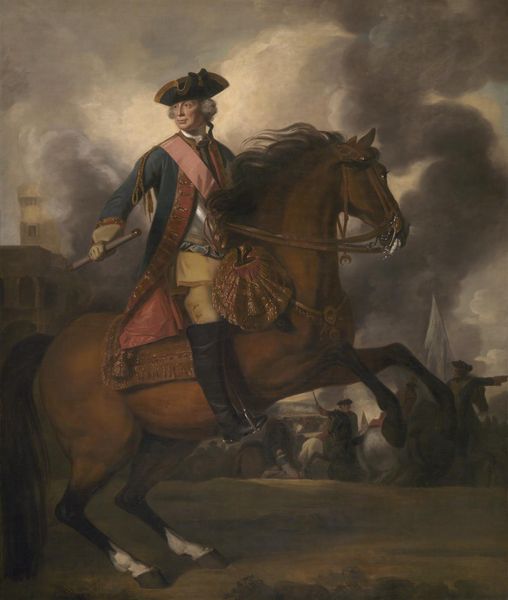
painting, oil-paint
#
portrait
#
painting
#
oil-paint
#
landscape
#
figuration
#
oil painting
#
romanticism
#
history-painting
#
erotic-art
#
realism
Copyright: Public domain
Curator: Standing here, we're looking at Piotr Michałowski's "Napoleon on a Horse," currently residing in the National Museum in Warsaw. Editor: Wow, that horse looks like it’s seen a ghost! It's all eyes and flared nostrils – total chaos frozen in oil paint. Makes you wonder what spooked it! Curator: Indeed. Michałowski, a 19th-century Polish painter, captured the Romantic era's fascination with heroic figures. Consider the implications of placing Napoleon in this composition – particularly the horse's expressive terror. This wasn’t just a portrait, it was about power, and its potential for instilling fear, even among the noblest of creatures. How does that intersection influence our reading? Editor: You know, despite the seriousness, I find a sort of grim humor in it. The dramatic landscape behind him – a sort of swirling darkness, hints at something ominous. But Napoleon himself, with his determined face, perched atop this magnificent beast is almost…comedic? Curator: I appreciate your observation. The landscape’s dynamism juxtaposed against Napoleon's relative calm introduces tension. This also touches upon ideas surrounding landscape’s role within history painting. Whereby a grand battle scene, for example, offers commentary of its players as impacted by landscape and greater historic context. The artist positions Napoleon in history. Editor: It's true. There's such vulnerability on the animal's face. As if the poor horse knows something Napoleon doesn’t. Sort of makes me want to whisper "run, horse, run!" Curator: And, isn't that the crucial tension embedded in many equestrian portraits of leaders? A subtle commentary on hubris and control? Michałowski prompts us to interrogate the dynamics of power inherent not only in the historical figure himself, but those over which he is empowered. Editor: Okay, professor! I hear you! It’s deeper than a fancy horse picture. I am seeing history here, playing out on a smaller, much more intimate scale. I might have to change my view on those so-called history paintings after all. Thanks. Curator: And thank you, for lending your insight. Hopefully now others may feel better equipped to examine history's layers.
Comments
No comments
Be the first to comment and join the conversation on the ultimate creative platform.

